|
In two earlier blog entries, I grumbled “Enough is enough!” with the Grazyna Bacewicz revival - suggesting record labels were taking it too far, merely jumping on the bandwagon of her recent name popularity. I felt (and still do) that they were giving us too much of her lesser work, particularly when they began digging up some of her discarded, unpublished stuff which didn’t represent her at her finest.
While I wasn’t exactly wrong about that, I now realize there is much more to explore. My criticisms were mostly of her chamber music (and piano concertos), which can get pretty wayward and determinedly atonal to the point of deliberate unpleasantness. But this new recording of her symphonic works shows her artistry in a completely different (and more distinguished) light. I was familiar with Bacewicz’s lighter orchestral music, mostly for string orchestra, and thoroughly enjoyed it. (There are several discs of it on the DUX label and a notable collection on Hyperion.) And I thought her 7 Violin Concertos (on Chandos) were absolutely sensational. So I shouldn’t be at all surprised that I love these two symphonies so much. What does surprise me, though, is how much they sound like Arnold Bax. As a matter of fact, in a game of “name that composer”, I would instantly, unhesitatingly and repeatedly name Arnold Bax as the composer of these symphonies. The booklet writer insists this music is reminiscent of Bartok above all else (and sometimes Szymanowski), but I don’t hear it. Rather, I am consistently reminded of Bax’s grand, colorful, resplendent orchestral tone poems (and even of a couple of his more approachable symphonies, e.g. #2 & 5). There is that same distinctive orchestration (thick chordal richness in the woodwinds, for example) and expansive harmonic landscape, with boundless chromatic freedom so characteristic of Bax. There’s also a similar thematic development style, where the kernel of a tune appears but doesn’t quite develop into one, but instead takes off in unexpected directions, soaring into the heavens. I cannot adequately describe this music in greater detail without first extolling the mastery of conductor Sakari Oramo and the superb playing of the BBC Symphony Orchestra. They are simply magnificent in this music. And so too is Chandos recording engineer Ralph Couzens. If I thought Chandos had attained the ultimate achievement in recorded sound for John Wilson's Rachmaninoff Third and Kenneth Fuchs collection, they take it to new exalted heights with this one. I am always greatly impressed whenever I encounter a recording with Oramo on the podium. One such example is his 2018 Chandos recording of the music of Florent Schmitt with this same orchestra. Another is his 2021 Ravel collection with the Royal Stockholm Philharmonic for BIS, which displayed many of the same characteristics. Given that was with a different orchestra and a different record label working in a different hall, I must therefore conclude that this amazing orchestral sound is all Oramo's doing - regardless of orchestra, recording venue or record label. And what he produces is simply extraordinary. We hear a gorgeous orchestral palette of color - lush and cushioned on air in the midrange - with some of the most sumptuous string sound you'll ever hear, creating ravishing textures. On my current (fairly new) SACD player, this Chandos recording is surely one of the most natural and realistic portrayals of a full symphony orchestra I have yet experienced on my home stereo system. It simply sounds like the real thing in a real hall. And it's positively glorious. Getting now to the music, it is indescribable. Except to say, if you know the music of Arnold Bax, you will know what to expect. That being said, credit must go to Oramo - not only for the salient qualities described above, but for his magnificent command of tempos. In the Third Symphony, looking at the first movement alone, the booklet lists no fewer than 15 different tempo indications! All within the overall indication of Drammatico. Oramo takes it all in stride, infusing every passage with a propulsive impetus, directing each contrast of tempo and mood to flow seamlessly into the next with natural forward momentum. And this continues in the second movement Andante, where Oramo gives the “poco piu mosso” indication its full significance, encouraging expressive singing lines to predominate over any hint of excessive seriousness. The infectious Vivace isn’t just fast and vivacious (though it certainly is that), it’s fleet and almost humorous at times - with inventive orchestral effects and gorgeous, rapturously singing strings punctuated by delightful woodwind interjections. The orchestration is magnificent in this symphony - especially so here, titillating the ear in every bar. The Finale is more passionate (as indicated), but again Oramo doesn’t allow it to weigh itself down with emotional baggage. Even with the frequent “meno mosso” indications, he continues to keep the tempo flowing with natural momentum, taking us to the final Presto, which thrillingly concludes what is in my estimation a truly monumental 20th-Century symphony. It is certainly one of Ms. Bacewicz’s supreme masterpieces. After this, the 4th Symphony has an almost insurmountable challenge of equaling it. And it very nearly does. It is not quite as exquisitely alluring as the 3rd, but more dramatic and dynamic - featuring the brass (and percussion) more prominently (and still impassioned with the essence of Arnold Bax). However, Bacewicz is much more restless and fervent in this work, often building to big, powerful, thickly scored climaxes with the orchestra at full cry, which she tended to avoid in the earlier symphony. In the opening Appassionato, we hear fascinating interplay between sections of the orchestra - shimmering strings answered by muted trumpets, for example. There is delicacy too, featuring the harp and expressive woodwind solos (especially double reeds), soon taken over by rhythmic pronouncements from insistent brass. And so it goes throughout - incisive, energetic motifs alternating with ravishing expression, all orchestrated with amazing effectiveness. At last, the distinctive flavor of Szymanowski appears in the Adagio (the booklet frequently makes mention of the elder composer) along with subtle hints of Bartok, before being overcome by a powerful section featuring ff brass. The bustling Scherzo Vivace is more vigorous (and less charming) than that in the earlier symphony, reminding me somewhat of William Walton, with its spiky rhythms and an Eb Clarinet biting through the texture. It’s playful too at times, with interesting back and forth interjections among various winds, with relentlessly busy strings scurrying beneath. The final movement is a bit unusual, perhaps providing a glimpse into Bacewicz's later-period compositional style yet to come. It begins with a very quiet Adagio, but soon swells into extended passages of rather unpleasant atonal brass at ff, before an Allegro furioso takes over with enormous propulsion - turbulent strings competing with pounding timpani and fanfare-like brass declarations. Tension builds (again reminding me of Walton) with interesting back-and-forth commentary from each section of the orchestra, until suddenly released, relaxing into a glorious meno mosso full of atmosphere. It doesn't last long before another brief furioso section leads to a final brass proclamation, bringing the symphony to a rather abrupt, unexpected conclusion, curiously without resolution. If not quite as overwhelmingly awe-inspiring as its predecessor, this symphony is nonetheless an amazing achievement - again demonstrating boundless creativity and fascinating orchestration. Oramo delivers a tour de force in musical involvement and sensational orchestral accomplishment - which, in and of itself, is most impressive. After this, appended at the very end of the disc for no conceivable reason, is an Overture. It isn’t an encore - and the ending of the 4th Symphony certainly doesn't lend itself to prompting one. It’s an Overture. One wonders if producer Brian Pidgeon understands what an Overture is and what purpose it serves in a musical program. Putting it at the end, as if just an afterthought, simply defies logic. Nevertheless, I am happy it is included and I dutifully programmed the disc player to play it first - just as it would be at a live concert. It is a splendid 5-minute concert-opener which sets the stage perfectly for a marvelous program of symphonic music to follow. I wasn’t expecting to be as thoroughly enamored with this music, or so completely engaged and immersed into the music-making, as I was. These symphonies are some of the most rewarding musical discoveries I’ve heard in ages. I loved every minute of this recording and have to say it's already on my “Best of the Year” list - and it’s only January! I can hardly give it more praise than that. This is essential listening for anyone who is passionate about orchestral music conducted with true inspiration and played with commitment, involvement, charisma and character - traits too rarely encountered from too many of today’s symphony orchestras and jet-setting conductors. Recorded in demonstration-worthy SACD sound, orchestral recordings simply don’t get any better than this. And I can’t wait for the projected Volume 2 in the series.
0 Comments
Glorious music gloriously played by pianist David Korevaar and the Carpe Diem String Quartet1/19/2024 This is a somewhat difficult recording to write about, simply because the music is so original and innovative, and yet...not new, I’ve never heard anything quite like it. Written in 1919 and 1932 respectively, I would have expected to hear rather traditional Romanticism influenced by 20th-Century Impressionism. And yes there is that. But at the same time, it’s so fresh, modern and forward-looking, I wouldn’t have been surprised to learn this music was written much later.
Luigi Perrachio’s Piano Quintet, composed in 1919, was so pioneering for its time, it’s incomprehensible it has been forgotten for over 100 years. In 2019, pianist David Korevaar discovered its manuscript and presided over its eventual publication in 2022. This CD represents its world premiere recording. And what an incredible discovery it is. But, I’ll get to that in a moment. I actually started listening to the companion work on this CD, from the more familiar composer Mario Castelnuovo-Tedesco. I have several CDs of Tedesco’s music on the Naxos label, which has championed the composer's music over the past decade. More recently, Da Vinci Classics has begun a series of new recordings of their own. Tedesco wrote a lot of piano and guitar music - solo pieces, chamber music and even concertos - much of which can be found on both labels. Naxos has also released two CDs of his orchestral music, “Shakespeare Overtures”, as well as a disc of his two Violin Concertos. While I always enjoy his music every time I encounter it, it is his chamber music which appeals most. His popular Guitar Quintet is glorious for sure, and it has been fortunate to receive several excellent recordings during the past decade. And now from Da Vinci Classics comes what must be considered one of his preeminent masterpieces - his rarely recorded 1st Piano Quintet. It has been recorded before: the premier recording appeared on a 2006 Albany Records CD, and a 2016 CPO release gave us both piano quintets. Unbelievably, I do not find either of these CDs on my shelves and regret not having heard them. And even more unbelievably, the CPO CD is no longer available, relegated to the digital-download-only format, making this new recording of the 1st especially treasurable. The first movement is free-flowing, rhapsodic and dramatic, complete with occasional fanfares as if proclaiming a call to action. There are passionate string lines soaring over rich, chordal piano writing, with boundless chromatic and harmonic freedom. The music is so varied and freely episodic it sounds almost improvisational. The Andante continues this rhapsodic outpouring with strong hints of Ravel’s Piano Trio, followed by a waltz-like Scherzo which is just quirky enough to be delightful, if not elegant. And the finale is positively orchestral in scope and orchestration; it’s difficult to believe this music is played by just 5 musicians. Tedesco’s Jewish heritage makes a strong appearance here, especially in the second subject, where the 1st violin is given prominence with distinctive, idiomatic melodies. All through the piece, I was captivated by the ensemble playing. I was particularly impressed with the size, breadth and amplitude of the piano contribution. And in response, the string quartet actually has to work at asserting their importance. The result is a certain muscular intensity to their playing which makes this music so thoroughly engaging. They certainly bring the inherent Italianate passion to the fore. Incidentally, I heard this same passionate playing on their earlier recordings of Jonathan Leshnoff’s wonderful String Quartets (#1 on Naxos, and #3 & 4 on MSR Classics) - although, curiously, only the original violist, Korine Fujiwara, remains a current member of the group (and a former violinist joins as a guest on this recording). Going back now to the premier recording of Perrachio’s Quintet, I was surprised to hear the opening movement instantly sounding rather more contemporary - even more harmonically adventurous, even more freely structured and improvisational. This despite it being composed 13 years before the Tedesco. The first movement is expansive (lasting nearly 15 minutes), with lots of passionate melodic themes played by the strings in unison over big, powerful piano writing. But there’s also some unexpected intimacy too, in the central section for example, with some delectable, transparent string scoring. Debussy and Ravel influences are heard everywhere in this music, but with Perrachio’s Italian distinction predominating. A short Scherzo follows, playful and quirky, with some imaginative scoring for pizzicato strings conversing with staccato piano tinkling. The Allegretto is pastoral in nature, simpler and more singing, while the finale is vigorous (as indicated) but not as passionate or intense as the opening Agitato. It is driven by a dance-like fleetness, often propelled forward by heavier marching rhythms, but never becoming ponderous. The playing is beyond reproach and this music could not possibly receive stronger advocates. The recording quality is very good too, if not quite state-of-the-art. The acoustic is warm but perhaps just a bit confined, slightly enhancing the group's imposing nature. But their awesome dynamic range is splendidly portrayed, from delicate softs to towering louds, and the fullness to the strings suits this music perfectly. This recording is a major accomplishment for David Korevaar and this CD is an important and indispensable release. The Tedesco itself is worth the cost of the disc, and with the inclusion of the Perrachio, it is invaluable. I implore Mr. Korevaar to consider recording Tedesco’s 2nd Quintet as well in the near future, especially since I can find no other recording of it currently available. I have encountered the fantastic Piatti Quartet before, on 2 previous CDs from Champs Hill. Most notable was their 2018 collection entitled “Albion Refracted”, where they play music by Bridge and Britten (and some horrid noise by Turnage) and a premier recording of a wonderful new string quartet by Joseph Phibbs. They also contributed to a comprehensive 4-CD set of Mendelssohn’s complete string quartets (2014) with a performance of his 5th (Opus 44, No 3). In both instances, the Piatti Quartet made a strong and lasting impression - with the vibrancy in their playing and a rhapsodic, almost operatic passion to their music-making.
When I spotted this new release on Rubicon Classics, I was instantly attracted by the appealing cover. And I was mildly intrigued by its headliner, composer Ina Boyle, who is given star billing with an enormous font at the very top. They present the premier recording of her 1934 String Quartet. However, there are other attractions which enticed me more - namely a rarity by Ralph Vaughan Williams and the 2nd String Quartet by E.J. Moeran. I have heard both of Moeran’s quartets (played by the Vanbrugh Quartet on a 1998 ASV CD), but it was so long ago I have no real recollection of them. I do love his orchestral music, so I was eager to hear this new recording of his 2nd string quartet. Also included is a short piano piece by John Ireland, “The Holy Boy”, which the composer subsequently arranged for string quartet. It’s one of his Four Preludes and it's a pity this group didn’t see fit to have the remaining three orchestrated to include here. (There is plenty of room on this CD, which plays for just 58 minutes.) Shortly before receiving this new CD, I had just listened to the Verona Quartet’s new Ligeti recording (ironically on the Dynamic label) and found it meticulous and too civilized. Playing all the notes beautifully is simply not enough these days to become a distinguished modern string quartet. What a difference when listening to the Piatti Quartet! Instantly, I again encountered the vibrancy of their sound which immediately drew me in. And their amazing dynamic range kept me there. And this was in Vaughan Williams! Their playing continued to impress throughout the entire program. What truly fabulous string quartet playing this is. To be fair, some of the credit must surely go to Rubicon Records for capturing the group with such presence and realism in an absolutely gorgeous acoustic (St. Silas Church, London). It’s warm and just reverberant enough to provide a glowing blend, while being dynamically expansive. It’s not always easy for an engineer to get the sound of a string quartet just right, with immediacy and a blended body of sound, in an atmospheric, yet detailed acoustic. But when it happens, as it most certainly does here, it’s simply incredible. Vaughan Williams’ "Household Music" (subtitled Three Preludes on Welsh Hymn Tunes) is a real find. Although it has been arranged throughout the years for various combinations of winds, strings, and even a version for string orchestra, we get it here in its original setting for string quartet. The piece begins with an intimately singing Fantasia (reminiscent of Thomas Tallis) followed by a short, vigorous Scherzo. It concludes with an expansive Theme and Variations, similar in style to his Folk Song Suite. This is wonderful music which I had not heard before (in any guise), and we're off to a terrific start. Coming after it, Boyle’s heretofore disregarded lone string quartet is more rhapsodic and sweet. It is enterprisingly scored and features singing violin writing throughout - gloriously played here by first violinist Michael Trainor. Cast in three movements, it is heartfelt and introspective in a proper, unmistakably British way. It begins with a pensive, free-flowing opening Allegro Moderato, followed by a thoughtful central Adagio - which feels a bit overlong for its material, at over 8 minutes. The final Allegro molto then is far too short (well under 4 minutes) and isn’t as uplifting or vigorous as I had hoped. A more striking contrast from the earlier sections would have been beneficial - perhaps with a touch more molto to it and a glimmer of good spirits as well. It remains rather determined to the very end. Taken as a whole, this Quartet is pleasing and enjoyable, if not necessarily innovative or enduringly memorable. However, it surely doesn’t deserve the neglect it has suffered. It is quite a discovery for this wonderful group to present as the centerpiece of this album. Best of all though, is undeniably Moeran’s 2nd quartet. It was published posthumously and its composition date is apparently unknown. However, it sounds decidedly late period. (The booklet suggests post-WWII.) It has an easygoing folksong feel with more than a hint of Dvorak running all through it. The Allegro Moderato is rhapsodic and much more passionate than anything else on the program. And here the Piatti Quartet really shines. They play with a soaring, almost operatic quality which is extremely moving. This, combined with the suddenness of dynamic contrasts, is appealing and thoroughly engaging. The movement closes with a short scurry of activity before calming into the 2nd movement. The opening Lento establishes a pensive mood on the viola, soon joined by a sweetly singing 1st violin. The two engage in some wonderful interplay, as if in impassioned conversation. The central section takes off in a rollicking Irish jig, with more Dvorak heard in the singing violin line up above it. Hints of Ravel’s Quartet make an appearance in the rhapsodic Andante, which eventually leads to a captivating central section played con sordino. A toe-tapping folksong emerges once again in an animated jaunt through the wide-open countryside, taking us to the end. Rubicon includes a simple booklet with concise notes about the music, but nothing about the quartet or individual musicians. I guess we have to go to the internet for that. Otherwise, the production is first class and this is a most rewarding and valuable release - not only for the rhapsodic, dynamic, enraptured playing, but also for the wonderfully chosen program of music. After enduring the impossibly fussy Mozart Piano Quartets on Chandos last year, here comes a not-quite-as-fussy Beethoven Piano Trios set on Challenge Classics. And in both cases, it is the piano playing which is cause for concern. But I’m getting ahead of myself.
I must start with a general observation about the production itself, which is a bit unique - possibly helpful (to some), but certainly irritating (to me). These Trios are not laid out in chronological (or numbered) order. Instead, they are assembled for maximum disc length in order to squeeze them all onto just 3 CDs, whereas the usual layout involves 4 (or even 5, depending on additional fillers). So economically, it’s nice, right? (And you can be sure it’s better for Bridge than it is for the consumer.) But musically, it’s absurd. Just glance at the back cover (pictured above) to see how these are presented and then figure out how you’re going to go about listening to them. But there might be another reason behind this layout - one perhaps only they are privy to. After listening to the entire set, I concluded the very first work presented on CD1 (Opus 70, No. 1 - the Ghost) is by far the best performance of the lot. And that can make a difference if you listen to it in the order they want you to, because it makes a strong, favorable impression right up front which they’re hoping will influence the listener in that direction throughout all the rest. As opposed to what I did. I listened to these in order, skipping over the Ghost and going directly to track 5 to hear Opus 1, No. 1 first. And I was not impressed in the slightest. And, sadly, that feeling persisted throughout my listening to the rest. (At least until I heard them play the Ghost. But I’m getting ahead of myself again.) My observations in this review apply almost entirely to everything but the Ghost. (And I'll get to that soon enough.) In general, I find this to be rather fussy Beethoven, with some self-conscious rubato cropping up just about everywhere. Also troublesome is some uncertainty in interpretive approach from the 3 players as a coordinated, unified ensemble. The violin and cello seem to be in sync with each other regarding such matters as articulation and phrasing, while the pianist just does her own thing - seemingly unaware of what the others are doing musically. In the Opus 1 Trios, it’s in the scalic passagework where this is most obvious. The strings play with precise, articulate bowing - producing fairly crisp, clean, rhythmically secure passagework (though it’s not quite spiccato). While the piano responds with legato, almost mushy passagework. (I call it “blurred”.) And the problem is that it’s just not quite rhythmically secure. I hear it as over the top - just managing to get in all the notes in the right amount of time. This observation persists, where I often became aware of this odd “blurring” in the piano playing. I might not mind it as much if they all were doing it, but Yael Weiss alone plays this way. In the more mature works, matters of articulation are less bothersome, and rubato becomes more of a distraction. Interpretively, you will hear quaint Beethoven trying to be charming - and not quite succeeding. It’s just a little too temperamental and overly-Romanticized. And tempos are generally a bit too relaxed for my taste. These are surprisingly old-fashioned readings - the very opposite of fresh and invigorating. And frankly, it’s a little bland. I’m not sure that’s exactly what this group was striving for, and it’s certainly not what I want to hear in Beethoven. You'll also hear a touch of “historically informed” string playing, often with minimal vibrato and sparse textures. However, they don’t get obnoxious about it, but retain a sweet, silky tone at all times. As a matter of fact, violinist Mark Kaplan plays with an alluring variety of color, textures and vibrato speeds. I especially love how he plays soft passages sotto voce with an almost muted sound. There is a vibrancy to his pianissimo which seems to resonate in the wood of the instrument more than the string. It’s hard to explain, but it’s absolutely lovely to hear. As a matter of fact, Kaplan’s violin playing makes this set worth listening to. But that’s as far as historical insight goes here (other than all repeats being observed, which is a plus). The piano often plays with too much pedal and certainly too much rubato, veering ever so close to affectation (sometimes sounding downright awkward, like in the final movement of the Archduke). And as noted above, tempos are nowhere near what we might expect from a historically enlightened group. Another thing you’ll hear is very good recorded sound from Challenge Classics. The acoustic is warm and relatively clean (if not quite as airy or spacious as the very best). And the piano is naturally balanced behind the strings. Just as I was about to finish up, I remembered I had skipped over the opening tracks of CD1 and hadn’t listened to the Ghost. (And this illustrates another reason why I hate the layout. Getting through these is quite a chore, which is unacceptable.) So I dutifully went back to it and witnessed the group come alive! with a newfound vitality largely missing from all the rest. At last I hear commanding, articulate, energetic playing from all three players. And tempos are invigorating. This finally sounds like what I was anticipating from this group. Their playing is vigorous without being aggressive, which is not always easy to achieve in this work. As good as this is, it alone can’t redeem what is overall a disappointing set. And I can't imagine why so many seem to like it (based on various reviews elsewhere). There are two far superior recent ones I can name - the even more complete set played by Trio Elegiaque on Brilliant Classics (2012, 5 CDs), and even better, the Xyrion Trio’s comprehensive survey on Naxos (2004-2013). Both those sets feature crisp, alert playing; unified precision in interpretation; lively, vivacious tempos; a pervading sense of spontaneity; and even clearer, more immediate recorded sound. Perplexed by this new set, I explored the booklet for possible explanations. I stumbled across something informative in their bio, which describes the group as “combining the talents of three award winning soloists”. And there it is. That’s exactly what I hear - three soloists playing together but perhaps without a solid, unified agreement as to interpretation. They just don’t quite “gel” yet. Their bio also tries to convince us they bring “authority, energy and passion” to each performance. Well, that may be when performing live, but I don’t hear enough of that in these Beethoven recordings. There is a good amount of it in the Ghost, but not enough elsewhere to be persuasive. I also discovered in the booklet that these recordings were made back in 2019 and are only just now being released on CD in late 2023. How odd. I realize the pandemic put a halt to production for some time, but with this already “in the can”, I wonder why it was delayed 4 whole years. Whatever the reason, and despite the annoyance with the layout, the production is first class - especially the booklet. In addition to useful information about the music and musicians, it also contains personal essays from each member of the group, summarizing their approach to, and experience with, playing Beethoven - which I found most interesting. After being somewhat disappointed with this ensemble’s previous disc (Beethoven and Berwald Septets), I decided to give them another chance with this newest release on the BIS label. They play music completely unknown to me so I was eager to explore.
While I had issues with the violin playing in their earlier release, on this current program, it's with the clarinet playing. When did Michael Collins develop such a bright, edgy tone? I certainly never heard this on his Chandos discs. And I don’t ever recall hearing a BIS recording - ever - that was in the slightest bright and edgy. But that is exactly what we have here - even on SACD. In the first two works on the program, Howard Ferguson’s Octet and the Bliss Quintet, the clarinet is prominently balanced as if these are clarinet concertos. He’s given a bold, forward placement in the mix and afforded a bright edge. In addition, the strings sound thinner than they should, exacerbating the brightness. Worse, the group is presented with a flat perspective with each instrument vying for attention in a bold, forward manner. The results are often clamorous - the very opposite of alluring. I don’t know if it was the irritating sound or unappealing music (or both), but I didn’t enjoy either of these pieces the first time through. So I decided to set this aside and come back to it a few days later for another attempt. I came away with similar impressions, but matters were a bit more favorable this time around. I recognized that the Ferguson has some real potential, and perhaps with more pleasant sound, might be quite rewarding. And if one can listen past the edgy violin and clarinet, there is some delightfully characterful playing throughout the group. The Bliss too became more appealing - rhapsodic, with some early 20th-Century Impressionism within its rich scoring. And there is a passage near the end where Collins plays with a delicate pianissimo way up high, which is actually quite lovely. If only the group had played softly more often. As it is, there is a pervading touch of aggressiveness throughout which the piece doesn't deserve. Trying this disc on a different SACD player with a good set of headphones, I quickly realized it's not just the clarinet given the forward edge, but also the first violin adding its own. The combination of the two is quite overwhelming. And the noisiness of the acoustic actually became worse. The third work on the program, the Serenade (Octet) by Robin Holloway, is decidedly more contemporary and sparsely scored. It’s slightly better recorded too. The lower strings gain some body, adding a bit of warmth, and the clarinet and violin are more naturally balanced (though the flat, forward perspective remains). Nevertheless, this is still not a great piece of music, and the unskillful orchestration does it no favors. Holloway quite ill-advisedly writes exposed passages for the clarinet in the extreme highest register (we're talking notes above high G). Mr. Collins does his best to accommodate the composer’s preposterous demands, but it sounds absolutely excruciating, despite the slightly softer recording perspective. Going back to the entire program on a 3rd day, for one last try before writing this review, I found myself adjusting to the boldness of the sound and appreciating all three works much more than before. While my criticisms still apply, I was finally able to listen through them and simply enjoy the music more. About this recording, the booklet reveals that the first two pieces were recorded two years earlier (in 2021), with a different sound engineer, than the Holloway (2023). That's interesting. And curiously, just as I noted in this group’s previous release, these newer recordings weren’t made in their namesake Wigmore Hall either. This time they’re in the Menuhin Hall, Surrey, England. I simply can’t imagine why this group doesn’t record in their own hall, especially when the Menuhin Hall is so unflattering to their sound (at least as recorded here). This release took some perseverance (and more than a bit of tolerance) to enjoy. At first I was skeptical of the music itself; then critical of the playing. But in the end, I've concluded it's the BIS engineers who must shoulder much of the blame. I'm baffled how (or why) they managed to make this sound like it does. If you are a clarinet player interested in hearing Michael Collins play lots of high notes, then this recording may be enticing. However, if you want to sit back and enjoy some really good chamber music and relish consummate ensemble playing in state-of-the-art recorded sound, then this disc will be a bit of a challenge. But rewards can be found with repeated listening. I was excited when I first saw this release. But I quickly became concerned that perhaps the Verona Quartet wasn’t quite ready to tackle Ligeti. Based on their 2 previous CDs, I hear them as a very accomplished string quartet, somewhat confined within the boundaries of traditional good taste and ultimate refinement. And I just wasn’t sure that was going to work in Ligeti. And listening to this new recording, I was disheartened to hear them prove me right. They just don’t exhibit the audacious temperament for this music and safely take a civilized approach to it. Perhaps they deliberately set out to make it so affable that everyone will suddenly like Ligeti! But for those of us who love Ligeti, this just won’t do.
The First sounds so well-mannered it loses even its Bartok element, let alone its forward-looking innovation portending where Ligeti would eventually go. Dynamics and characterization are the primary problems. The sudden contrasts of dynamic extremes are softened and I miss real bite and muscle to bowing. And the many varied sections in the piece are not strongly characterized enough. The Second suffers similarly, and there isn’t even a gain in the necessary atmosphere which is essential to any success it could achieve as a performance. It doesn’t exhibit the otherworldly, cosmic soundworld that it must. They play all the notes but without fascination or astonishment. I know I’m being critical. But these Quartets absolutely must be startling. Shocking even. Or at the very minimum, awesome. And they aren’t in these readings. They’re meticulously played, but sound careful, matter of fact and benign. As an afterthought, the Andante and Allegretto is appended at the end for no apparent reason. It comes as an unwelcome intrusion after the final notes of the Second Quartet have faded away into the mists of space. This was composed before the quartets and should have been placed there on this CD. Other than that, the production itself is excellent. As is the recorded sound. I can’t fault the engineers for any of the noted deficiencies in dynamic range or atmosphere heard on this recording. The acoustic seems perfectly suited to this music and should have worked just fine. This is beautifully recorded and proficiently played. But I need more than that in Legeti. Looking back at all the new CDs I’ve listened to this past year, I couldn’t help but be overjoyed seeing so many new Classical releases. I had been pretty discouraged for a couple years after the pandemic, when numbers had dwindled alarmingly. But Classical music is not only back, it’s flourishing!
With so many notable new releases this past year, I began contemplating those which moved/inspired me most. And considered what characteristics elicited strong emotional reactions - positive and negative. Inspired performances, orchestral engagement and recorded sound are all important factors which contribute to the most favorable responses. And deficiencies in any (or all) of those areas usually leave me with a bad impression. Just for fun, I compiled a list of the best and worst releases of 2023. And as I began taking a closer look, it soon occurred to me that a couple of my favorite labels (Chandos and Pentatone) produced recordings in both categories, which I found intriguing. And one conductor in particular (John Wilson) also managed to make both lists. (Even a popular conductor has good days and bad days, I suppose.) So for something a little different to end the year, I decided to revisit these recordings and offer a little overview. I've assembled them into 4 categories: Best, Worst, and runners-up in each. Then at the very end, I discuss some notable releases I haven’t yet reviewed. The Best Rachmaninoff Symphony # 3 - John Wilson/Sinfonia of London/Chandos (late 2022) Fuchs Orchestral works - John Wilson et al Ligeti String Quartets - Quatuor Diotima/Pentatone Runners-Up Sierra Orchestral Works - Domingo Hindoyan/Royal Liverpool Philharmonic/Onyx Penderecki complete string chamber music - Meccore Quartet/Capriccio John Wilson’s Rachmaninoff 3rd with the Sinfonia of London came near the end of 2022, so it’s not technically new this year. But I didn’t get around to listening to it until March, when his companion recording of the 2nd Symphony was announced. And as it turns out, the former is much more successful than the latter, so the earlier recording definitely deserves to be included on this list (just as his Second does not). I was pleasantly surprised by Wilson's recording of the Third Symphony (and its coupling, The Isle of the Dead). I wasn’t expecting such involving readings from him. I usually hear Wilson as being distinctly matter-of-fact and nuts-n-bolts on the podium, perfectly content letting his orchestra do the rest. And that tends to suit some music more than others. But in Rachmaninoff, his straightforward approach works extraordinarily well; and in the Third Symphony, he displays a deeper emotion not often associated with him. And that in turn extends out to his orchestra, inspiring truly committed and passionate playing from them. Chandos delivers gorgeous, yet transparent sound, making this a Rach 3 to match Ormandy’s 1967 reading with the Philadelphia Orchestra, with the benefit of modern, state-of-the-art sound. While Wilson's reading of Rachmaninoff’s Second is more typical of him - rather more detached and not delving much below the surface, his next recording is truly remarkable. And it’s easily my favorite of the year: a collection of newly composed orchestral works by American composer, Kenneth Fuchs. John Wilson finds a special affinity with this composer (just as he has in the past with Erich Korngold) which brings out the very best from him. He is at his most inspired in this music and his orchestra responds with enthusiasm and spectacular playing. Best of all, Chandos produces some of its very best sonics for the occasion. And what an occasion it is! The music is imaginative and appealing in an instantly gratifying way, and the entire program dazzles with color and exuberance from start to finish. Another surprise this year comes from a group previously unfamiliar to me – the Quatuor Diotima. Their recording of Ligeti’s 2 String Quartets is electrifying. And Pentatone’s recorded sound is excellent, despite it being a standard CD only release. (The label has sadly chosen to abandon the SACD format almost entirely these days). Anyone who thinks they don’t like Ligeti should hear this CD. It’s absolutely sensational. The runners-up are very nearly as rewarding. The Sierra orchestral collection contains some terrific music, if not as outstanding as that on the Fuchs collection. But this recording is notable for the committed, enthusiastic orchestral playing Domingo Hindoyan elicits from the Royal Liverpool Philharmonic. They play their hearts out for him in this high energy, picturesque program, which tends to knock your socks off. But there is also refinement and finesse, providing endless variety and musical involvement. Onyx affords them excellent recorded sound, among their very best yet. The Penderecki collection on Capriccio is notable for including so much music on one CD (all his chamber music for strings, including the Trio and the Clarinet Quartet in addition to the 4 string quartets). It is all expertly played by the Polish Meccore Quartet in excellent recorded sound. This group has this composer's music in their very souls. As a matter of fact, one member advised me they played most of this music for the master himself before his death in 2020. (This recording was made in 2021.) This is an invaluable CD for any admirer of this composer. ******************************** The Worst Yuja Wang “The American Project” Mozart Piano Quartets - assorted instrumentalists/Chandos Brahms Serenades - Julien-Laferriere/Mirare Runners Up Bartok Piano Concertos - Aimard/Salonen/Pentatone Saint-Saens Orchestral Works - Bolton/Prospero Verona Quartet “Shatter” - Bright Shiny Things Ravel Daphnis and Chloe - John Wilson et al Why Yuja Wang would participate in this charade in Kentucky is incomprehensible. The booklet tells us she was friends with the composer/conductor in college; but surely when she glanced at his “score” she should have had second thoughts. It is utter nonsense. (And the title of the album is disingenuous at best.) Topping it off, DG captures the cacophony with some of the most inept engineering I’ve heard from this label in decades. Normally a pianist I admire, Wang easily merits the worst of the worst honor for this one. In a close second comes one of the most musically irresponsible releases I’ve heard in years. A group of young Chandos regulars assembles for a recording session and turns in a tawdry reading of Mozart’s beloved Piano Quartets. The pianist, Federico Colli, in particular, manages to single-handedly ruin whatever good might have come out of this misguided venture. His playing is flippant and outrageously pretentious. I’m appalled Chandos would produce this. I like the Mirare label, so I took a chance on Victor Julien-Laferriere’s debut recording as conductor where I encountered what is undoubtedly the most pedestrian, plodding, joyless and uninspired Brahms I can ever remember hearing. Laferriere is the cellist of the Trio Les Esprits (who coincidentally have recorded some Brahms) and has recently recorded the solo part in Dutilleux’s Tout un Monde Lointain (which is lovely). Why that musicianship hasn’t transferred to the podium is baffling. I suspect the community chamber orchestra he leads in these Brahms Serenades isn’t quite ready for prime time. And I can’t imagine why Mirare would be interested in recording this. As to the Runners-up, they aren’t nearly as bad. But in a marketplace full of outstanding recordings (and with so many excellent musicians eager to get their chance at making a record), these releases are largely irrelevant and completely unnecessary. Aimard’s Bartok in San Francisco for Pentatone is so pedestrian and lacking in spontaneity, I am shocked it comes from live concerts. Similarly, the Saint-Saens orchestral collection on the Prospero label is insipid and entirely pointless. (Moreover, it's extremely poor value, playing for just 49 minutes). Both come in mediocre recorded sound. And I just shake my head and wonder WHY? The Verona Quartet’s latest album, “Shatter”, makes the list for its ill-conceived programming. Committed playing and excellent recorded sound can’t salvage the abysmal music they chose - with the exception of the terrific String Quartet by Michael Gilbertson (which comes last on the CD, occupying a mere 15 minutes of the program). Furthermore, the Bright Shiny Things production is slipshod, with spelling errors on the folded cardboard enclosure and no liner notes included. Why this fine quartet would choose this particular program of music is bewildering. (I hate to single out the Verona Quartet on this topic, as many other quartets are guilty of it as well. A plea to all of you: Stop recording bad music. Please. And, while I’m at it, stop featuring the clarinet in so much of what you record. Just stop it.) And finally, Wilson is exasperating in Daphnis & Chloe, rushing through it without much consideration. He's so preoccupied with the notes on the page he misses the essence of the music. It’s so disappointing compared to some of his other achievements, it falls squarely into the “unacceptable” category. Even Chandos fails to provide great sound for this one. This is not the first time I’ve pondered how much of this team’s success is the terrific recorded sound or actual musical aptitude. (Or an intrinsic, integral combination of the two.) As evidenced on this newest release, the music falls flat without the aid of Chandos’ spectacular recorded sound; so one can come to one’s own conclusion. ************************************ To end the year on a positive note, I want to mention a few recordings I liked a lot but haven’t reviewed yet. Honorable mention (not yet reviewed) Bartok Viola Concerto - Grosz/Bloch/Alpha Classics Korngold String Quartets - Alma Quartet/Channel Classics "Atmospheriques" Vol. 1 - Daniel Bjarnason/Iceland Symphony Orchestra/Sono Luminus Mazzoli Orchestral Works - various artists/BIS A new Bartok offering from Alpha Classics is outstanding. The soloist in the Viola Concerto is Amihai Grosz, principal violist of the Berlin Philharmonic and former member (and founder) of the Jerusalem String Quartet. He, along with conductor Alexandre Bloch, bring real vision and direction to this piece, affording it new life as never before realized. Bartok didn’t complete the work before he died, leaving behind only 14 pages of notes and sketches. It was left to Tibor Serly to create a viable performing edition and construct its orchestration. I’ve never been a fan of it before hearing it played with such confidence and musical purpose on this superb new recording. Grosz’s playing of the solo part is, quite simply, awesome. Endearingly musical and excitingly virtuosic, this reading is revelatory. Grosz’s viola tone is positively gorgeous and the orchestra is thoroughly engaged. The coupling is a terrific Concerto for Orchestra - one of the best in recent memory - easily surpassing the two I reviewed this year, from Malkki on BIS and Canellakis on Pentatone. Bloch brings vivid characterization and crisp orchestral precision to each of the 5 movements, illuminating intriguing inner details which captivate the listener at every turn. He concludes with an absolutely thrilling finale - which, for once isn’t fast just to be fast. It’s purposeful. And, as a result, absolutely exhilarating. The Orchestre National De Lille plays brilliantly in both works and the recorded sound is excellent. The Korngold String Quartets become true masterpieces as played by the Alma Quartet on Challenge Classics. They recorded #2 & 3 in 2021 and completed the survey this year with #1 and the Piano Quintet. I’ve heard these string quartets before and thought the Doric Quartet turned in an equally wonderful reading of them on their 2010 recordings for Chandos (which incidentally also includes the marvelous String Sextet, which the Alma Quartet omits). I was slightly disappointed, however, with the Tippett Quartet’s reading for Naxos (also this year), although theirs has the distinct advantage of including all 3 string quartets on one CD (over 77 minutes of music). The Alma Quartet are emotionally immersive and endlessly colorful in tone and expression, and these are truly remarkable performances. Further, they have the benefit of some of the most alluring recorded sound of all - especially in the Quintet, where the piano tone is positively sumptuous. I’ll conclude with a pair of interesting new discs featuring the music of Missy Mazzoli. I first encountered her Sinfonia (for Orbiting Spheres) on a Sono Luminus CD entitled “Atmospheriques Vol 1”, played by the Iceland Symphony Orchestra. I liked it a lot (and much of the other music by various composers on that program too). And much to my surprise, here it appears again on a comprehensive collection of Mazzoli's orchestral music for BIS. All of this music is difficult to describe in words, but suffice to say Mazzoli's Sinfonia fits perfectly with the Atmospheriques album, because, frankly, that’s what it is - pure atmosphere and abstract sound rather than structured symphonic creation. I found both discs (comprised of music very similar in style) interesting and compelling. The Sono Luminus recording has been processed with so-called "Auro 3-D" and "Dolby Atmos" enhancement (and also includes a multi-channel Blu-ray Audio disc) and sounds appropriately other-worldly and rather larger than life in a boundless, atmospheric acoustic. It's actually very impressive - until one hears the BIS SACD, which is instantly much more natural and realistic (and thus more satisfactory). BIS also presents Mazzoli's marvelous Violin Concerto (Dark With Excessive Bright), which is more structured, somewhat tonal and often melodious. It features a large orchestral contribution, utilizing various effects in the strings which reminded me at times of Dutilleux and John Adams. The overall scope of the piece is reminiscent of a big sci-fi movie soundtrack. It is gloriously played here by violinist Peter Herresthal with the Bergen Philharmonic conducted by James Gaffigan. Curiously, the piece is also played in an arrangement for violin and string quartet at the end, which I found much less engaging and completely unnecessary. But there are other innovative works on this disc which are worth exploring, including an orchestral extravaganza, Orpheus Undone, which begins brazenly with a lone woodblock marking time, instantly recalling John Adams again. However, this isn't a mere ride on a fast machine; it's a voyage into the cosmos. Mazzoli takes the minimalism of John Adams resolutely into the 21st-Century, exploring vast new dimensions. Fantastic music, fantastic recorded sound and fantastic orchestral playing by the Arctic Philharmonic conducted by Tim Weiss. It’s possible my expectations were set too high for this release. I wasn’t overly impressed with John Wilson’s earlier Ravel recording (2022), but his Rachmaninoff Third was so superb (and the collection of works by Kenneth Fuchs so spectacular), I eagerly anticipated his complete Daphnis and Chloe, which is one of my all-time favorite orchestral works.
I suppose it was inevitable I would be disappointed. I believe I have on my shelves every commercially produced stereo recording of this ballet ever issued on CD. There have been many good ones, and more than a few unacceptable ones. But over the decades, there are just three which I consider to be the very best recordings ever made of the complete ballet: Munch/Boston/RCA (1955); Dutoit/Montreal/Decca (1980); and my favorite of all, Ozawa/Boston/DG (1974). This new Chandos recording is offered on SACD and thus invites comparison with two other recent SACDs (from BIS and Pentatone) - which I will get to below. Listening to Wilson’s account with his hand-picked Sinfonia of London, yes, I was disappointed. Overall, I found the reading to be just that - a reading. Wilson sounds rather impassive, somewhat cold and calculated, and in general, in a hurry to get it over with. (Incidentally, I heard many of these same characteristics in his previous Ravel recording). Sensuousness isn't important to Wilson, nor is the spirit of the dance. And unfortunately, the Chandos engineers don’t achieve the spectacular sonics we’re used to hearing from this orchestra. I presume squeezing a chorus onto the stage (along with extra wind and percussion players required in the score) necessitated a much different microphone configuration and the results are not nearly as successful as usual. Detailed below are some examples which illustrate these general observations. First and foremost, tempos are a concern throughout - especially in the First Part. The Danse religieuse (track 2), marked Modera un peu plus lent (“moderate and a little slow”) is simply too fast and feels rushed. Conversely, the following section (tr. 3), marked Vif ("fast"), is slow and a bit sluggish. As is the subsequent Danse general (tr. 4) - also marked Vif. Tempos are unvarying and indolent, and the music-making takes on a wooden blandness. I’m baffled by this. These tempo indications are pretty straight-forward and should be fairly easy to bring off. The Danse grotesque de Dorcon (tr. 5) is better, but all those little string gestures are too matter-of-fact and rushed by with scant regard. And I’m beginning to really miss some of the magic and sensuousness inherent in this music. Daphnis’s Danse (tr. 6) is full of color and atmosphere (as to be expected from a Chandos production), but here I’m missing some of the ecstasy and fantasy. And at Figure 53, an opportunity for pure magic if ever there was one, Wilson produces an exquisite ppp - the likes of which I have never heard an orchestra execute so successfully - but irritatingly rushes through it heartlessly. It’s marked LENT ("very slow"), which he ignores for no apparent reason, as if in a hurry to get to the next section. The Danse de lyceion (tr. 7) is under-characterized as Wilson forges ahead without much consideration. However, in the Modere at Figure 70 (the section which begins with ppp string trills), at last we hear what this orchestra is capable of. The truly soft playing is impressive, as is the superbly mysterioso flute solo. It is followed by the most exquisite (and surely the most difficult and feared in all the repertoire) horn solo imaginable. The diminuendo up to high C at the end of the phrase is positively ravishing as played here, with an effortless legato and at a true pianissimo. Oh my goodness - exquisite is the only word for it. This entire scene is magical and atmospheric and, in hindsight, is probably the most satisfactory of the entire reading. But in the Nocturne (tr. 8), Wilson is restless rather than hypnotic, diminishing some of its mesmerizing, rhythmic insistence. (And the wind machine is very faint, way back in the mists.) Part Two is introduced by the chorus (tr. 9) and they manage an impressive crescendo as the War Danse erupts (tr. 10). Wilson adopts a cracking tempo (appropriately so) and at last the adrenaline begins to flow. I am aware here, though, of the over-reverberant acoustic, which becomes a bit distracting (and noisy), burying many of the fast moving, intricate details. (“Swampy” even comes to mind, which is most unusual for Chandos). And as the Pirates' Danse heats up, the men of the chorus are subdued, faithfully adhering to Ravel's pp marking. But as the climax reaches its peak, where they are marked ff, they are completely drowned out by the cacophony coming from the orchestra. This is surely the fault of the engineers who simply did not achieve an ideal microphone placement. Chloe’s Dance of Supplication (tr. 11) is another beautifully played section, including an exquisite English Horn solo and some of the most sumptuous string playing heard thus far. I just wish Wilson had encouraged it more often. Part Three arrives and we are in very familiar territory. Wilson paces it broadly, but frustratingly, much of the seductive, gossamer filigree and beguiling details go by without notice, buried in the reverberant haze. As is the chorus, which remains exasperatingly indistinct. The enormous sunrise climax erupts just as it should (although not without a bit of congestion) and for once, Wilson doesn't rush through it. But I could do without the weird, frantic, mega-fast vibrato he elicits from his violins - which is wholly inappropriate here. The ensuing glow fades gracefully into the seductive Pantomime (tr. 13), which features a glorious flute solo played by Adam Walker (whose radiant tone, incredible breath control and dynamic range are wonders to behold), followed by a spectacularly executed passage involving the entire flute section. It was enlightening to actually hear the 2nd flute’s arpeggiated flourishes responding to the first flute’s trills at Figure 170 (which usually go by completely unnoticed), and the interplay among all the flutes (and piccolo) is expertly executed. But then, Wilson infuriatingly rushes through the Tres Lent immediately following it, at Figure 188, obviously in a great big hurry to get to the finale, where he simply unleashes the orchestra to do what they will. And they dutifully take off at breakneck speed. But, curiously, it's not all that exciting; it’s just fast. And civilized. What's sorely missing is wanton abandon. And the chorus lacks fervor, submerged back in the mix (cramped over on the left side). And in the helter-skelter race to the finish line, the chorus is overwhelmed by the orchestra, drowned out completely in the ruckus, undermining the impact of what should be one of the most thrilling conclusions ever composed. This music should be orgiastic; but Wilson seems content letting his orchestra make a virtuoso showpiece out of it. And that it certainly is. I have mentioned along the way some of the shortcomings of the recorded sound, and they are significant. In general, the acoustic is more reverberant than typical for Chandos, revealing the vast, empty church in which it was recorded. This is most unfortunate. Orchestral impact and inner details suffer. And time after time, I longed to hear the percussion (especially the timpani) make a stronger rhythmic contribution and dramatic impact. And the brass only occasionally burst forth with real authority. These sections of the orchestra sound to be way back in the stage, far away from the nearest microphone (while, oddly, I noted the flutes were too closely mic’d). Finally, I was bothered by the placement of the chorus, bunched over on the left side of the soundstage most of the time, which rather restricted their ability to produce a potent body of sound. +++++++++++++++ Comparing this new Chandos to two other recent SACDs is enlightening. Turning first to Yannick Nezet-Seguin’s 2015 complete recording with the Rotterdam Philharmonic on BIS (not to be confused with his 2009 EMI recording of just the 2nd Suite with the same orchestra), matters improve - but not that much, frankly. I wasn’t terribly impressed with this reading when it was first issued, and listening to it again, I’m still not. The recorded sound is clearer than the Chandos, to great advantage. However, there is a different problem here. Dynamic extremes are so wide, it’s difficult to enjoy in a home listening environment. The softs are so soft, they’re virtually inaudible. Cranking up the volume then results in distortion overload as the music crescendos. I found it impossible to find an acceptable volume setting and was constantly grabbing the remote to adjust it up and down. This was impossibly distracting and very annoying. However, it’s very well played and tempos are more sensible than Wilson’s. YNS coaxes some sensuous playing from the strings and the chorus is more robust as well, increasing dramatic effect. I was happy to reacquaint myself with the 2017 recording with Gustavo Gimeno conducting the Luxembourg Philharmonic Orchestra on Pentatone. I reviewed this disc several years ago, and while I thought the performance was one of the best in recent decades, I had some issues with the dark, slightly murky sound. Well, listening to it again, 6 years later, it sounds better than I remember. In my current system, this Pentatone is easily the best-sounding of the 3 SACDs under evaluation here. In fact, I was astonished to hear the rhythmic precision and incisive articulation in the playing - far and away better than with Wilson or Nezet-Seguin. The orchestra has more presence, with a much more natural (and manageable) dynamic range, and makes a splendid impact. Even more notably, Gimeno displays an intrinsic feel for this music which quite eludes John Wilson. It is everywhere apparent that this is ballet music and there is a story to tell. Gimeno brings out the sensuousness of this music, while generating excitement in all the right places. His strings are sumptuous, his chorus is the most clarified and impactful by far, and he encourages virtuosic, soloistic bravura from his principal players. The engaging and immersive involvement heard in this recording is positively thrilling, illustrating exactly what is lacking in the other two. While none of these new recordings matches Ozawa or Dutoit (sonically, musically, or for sheer orchestral prowess), Gimeno's is by far the most satisfying of the 3 recent SACDs. +++++++++++++++++ The Chandos booklet informs us that John Wilson spent a lot of time preparing a newly edited version of this score. By comparing the individual orchestral parts to the published score and Ravel's original manuscript, Wilson identified and corrected “hundreds” of discrepancies and errors. And this is actually enlightening. Listening to his recording reveals a fixation on the notes, at the expense of the music. Wilson's preoccupation with the printed page tends to highlight the detached, matter-of-fact nature of his conducting. And I believe this encapsulates my general dissatisfaction with it. In the end, this Chandos release isn't as “horrible” as Dave Hurwitz (of ClassicsToday.com) proclaims it to be on his YouTube review of it (although I don't disagree with his criticisms). Nor is it anywhere near as fabulous as Gramophone magazine (and others) would like us to believe. In my view, it falls squarely in the middle, like so many others before it. This is the 3rd CD from Domingo Hindoyan and the Royal Liverpool Philharmonic Orchestra, and it’s just as impressive as the previous two. What is obvious is that this orchestra positively adores their new conductor because they play their hearts out for him. Time and time again.
I wasn’t really in the mood for an album of orchestral interludes from Operas, but I was intrigued by the program (some of it initially unfamiliar to me) and was instantly drawn into this concert by what I heard. It’s actually rare nowadays to hear an orchestra so enthusiastic and passionate about what they play - especially for a recording session. Hindoyan has transformed this orchestra into something quite extraordinary, as evidenced everywhere on this CD. Just as heard in this team’s first recording (ballet music by Debussy, Dukas and Roussel), I am once again enormously impressed with this conductor’s ability to draw such committed and involving playing from his orchestra. In this repertoire, the characterization and endless variety in their music-making are astonishing - vivaciously dancing (Examples: tracks 1 & 7); passionately soaring (tr. 3); achingly tender (tr. 4); dramatic (tr. 14) and lyrically singing (everywhere). (Detailed track listing appears below for reference.) I was constantly aware I was listening to opera (as opposed to symphonic music), and I was constantly aware of the Verismo origins. There is an emotional humanity to it. Yet Hindoyan never applies a heavy hand with ostentatious emoting or excessive rubato. He allows the music to unfold with natural inspiration and exhilarating forward momentum. Dynamic contrasts, in particular, are remarkable - lending a marvelous grandness to the dramatic action inherent in this music. Further, there are many passages which are very exciting, which is rather unexpected in this type of music. Moreover, the variety of the musical selections is spellbinding - alternating between lyrical and dramatic, beautifully singing and invigorating, familiar and unfamiliar - captivating the listener's attention from beginning to end. What makes this concert so special is the impassioned sound Hindoyan elicits from the strings - the passionate, soaring lines; the exquisite beauty of expression in quiet passages; the sheer body of tone. This string section, en masse, immerses themselves into the drama with voluptuous vibrato (when appropriate), alternating with fast intensity and contrasted with a sweet legato via a lighter, more relaxed vibrato. They are so good at this, they actually remind me of John Wilson’s Sinfonia of London strings - which is high praise indeed. In the end, what a difference a conductor makes. Comparing this CD to just about anything this orchestra recorded with its previous conductor (Vasily Petrenko) illustrates and illuminates just how fabulous Hindoyan is. The orchestra now has character. And charisma. And while the string section is definitely the star of this show, there’s much more. For instance, just listen to the exquisitely intimate quartet of solo strings at the opening of Puccini's Manon Lescaut and the flute solos in Wolf-Ferrari's Il gioielli della Madonna to witness just how good this orchestra is these days. The recorded sound is very good if not quite equal to the exalted standards Chandos achieves with the Sinfonia of London (for example). Nor is there quite the silky lushness of the best BIS SACDs. Onyx’s house-sound can be just a touch hard in fortissimos rather than cushioned on air, particularly when the percussion comes crashing in. But dynamics are impressive and certainly make an impact. Further, the Onyx soundstage allows the strings to soar rapturously with glorious tone, rich with saturated colors and textures. Their gorgeous body of sound expands with passion and intensity, while relaxing with delicacy in intimate passages. The acoustic is warm, atmospheric and alive, if not quite as sumptuous as the very best orchestral recordings. In closing, Hindoyan is a sensation. And the orchestral playing on this CD is positively glamorous. The Royal Liverpool Philharmonic has struck gold with their new conductor and Onyx Classics has a real superstar on their roster. I was excited to see a second installment in Linn Records’ African American Voices series with Kellen Gray conducting the Royal Scottish National Orchestra. I was most impressed with their first collaboration, particularly with the splendid music they played – symphonies by William Levi Dawson and William Grant Still, both true pioneers of American music.
This new CD is somewhat disappointing in that the music is not as esteemed as that on the first one. I was hoping for more symphonies - Still’s 2nd, for example. Instead, we have lighter, more idiomatic, descriptive expressions, rather than ground-breaking symphonic music. However, there is much to enjoy here; it’s just completely different from the earlier release. Beginning with the Margaret Bonds “Montgomery Variations”, I read in the excellent booklet (expertly written by Gayle Murchison) that this is her only surviving purely orchestral work, which she never heard performed. It was considered lost until being rediscovered in 2017, and I presume this is its premier recording (although that is not stated anywhere on the production). Written in 1964, it is based upon a Spiritual and was dedicated to Martin Luther King. The main theme is announced in a matter-of-fact, rather grandiose manner, but a wonderful variety of mood, tension and atmosphere informs the following 6 variations. “Prayer Meeting” is one of my favorites, being very descriptive and well scored. The “March” is predictably (but gently) rhythmic, with the theme presented by, of all instruments, a solo bassoon, followed by the cellos. It reminded me, curiously, of Vaughan-Williams. “Dawn in Dixie” transforms the music into a slow waltz in minor key. The theme is passed around among solo woodwinds, featuring splendidly characterful playing from the orchestra principals. “One Sunday in the South” is another favorite, depicting happier times – perhaps a picnic after church. “Lament” is filled with mourning, while the concluding “Benediction”, with some luscious string writing alternating with woodwinds in octaves, is winsome and introspect, eventually leading to a sense of hope. (The booklet describes it as “resolve, determination and faith”.) The piece is endearing and heartfelt, sounding very traditionally “American”. It is imaginatively scored, if not quite masterfully so. The same can be said for the concluding work, Coleridge-Taylor Perkinson’s Concert Overture, “Worship”. It has more energy and extrovert variety than the Bonds, featuring the percussion and brass more judiciously. Some of its lightheartedness can sound a bit superficial, but there is some truly moving string writing in the more heartfelt moments. The piece is itself a kind of theme and variations, but on a smaller scale than Bonds’ work - more concise and succinct, and often contrapuntal in structure. It is surely the most adeptly scored of the entire program, featuring interesting, back and forth conversations among sections of the orchestra and animated woodwind solos, and even a brief contribution from a string quartet. Very nice indeed. It lasts just 6-1/2 minutes and I thoroughly enjoyed it. The central work, Ulysses Kay’s Concerto for Orchestra, is the largest in scope and, unfortunately, the least interesting and musically satisfying. It is laid out in 3 extended movements, all rather slow-moving. The most impulsive section is the opening, rather cumbersome, Allegro moderato. That is followed by a simple, expressive Adagio (which is actually quite lovely before going a little wayward as it progresses) and concludes with an Andante, which goes on far too long for its thematic material. In sum, this is hardly the typical, virtuosic "Concerto for Orchestra" one would expect. Written in 1948, when some composers were leaning toward serialism and avant-garde experimentalism, Kay refused to limit himself to any style - traditional African-American idioms or otherwise. Instead, his music could be considered Neoclassical. (I am paraphrasing from the booklet.) He chooses families of instruments for his Concerto, rather than more traditional solo or small groupings. Thus it is more seriously symphonic in nature than its title would imply. It is crafted by an accomplished composer, but for me, achieves neither the heights of true symphonic invention (such as the symphonies from Still, Dawson and Price) or the intriguing, descriptive story-telling appeal of Bonds or Perkinson (to name just the two on this program). Nevertheless, it is interesting and worth hearing. All through the program, the leadership from Kellen Gray is outstanding and the orchestral playing is first rate. However, I occasionally noted while listening that the orchestra doesn’t sound quite as committed to this music as they so obviously were in their playing on the earlier recording. Even glancing at the full-spread picture in the tri-fold cardboard enclosure, I couldn't help but notice the players don’t seem to be enjoying themselves that much – some are leaning back in their chairs looking somewhat bored, one has his legs crossed, and another in the back sits with his arms across his chest, almost asleep. Body language and all that. But in their defense, and in all honesty, these compositions are not as accomplished or skillfully orchestrated as the awe-inspiring symphonies on the first CD. And it is especially unfortunate the Kay work was chosen over something more appealing. Furthermore, with an overall program lasting just 47 minutes, surely another work could (and should) have been included. Perhaps compensating somewhat for the CD’s short playing time, Linn includes an extravagant, 30-page booklet containing comprehensive information about the music, the composers and their musical history. Taken as a whole, this is an interesting and enjoyable concert of music rarely (if ever) heard. It is well played and recorded and Kellen Gray demonstrates once again to be a thoroughly inspired - and inspiring - conductor. If not quite as musically rewarding as this team’s earlier release, I eagerly look forward to a 3rd Volume. |
Proudly powered by Weebly
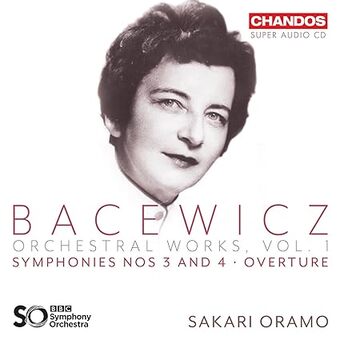
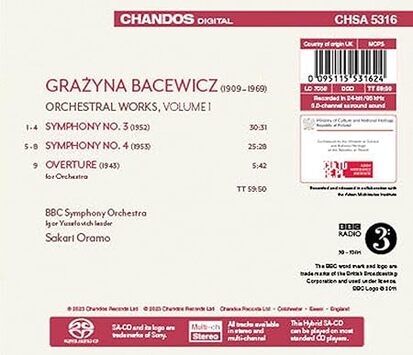
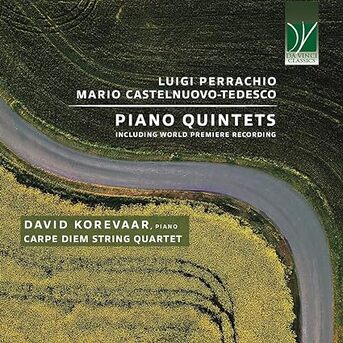
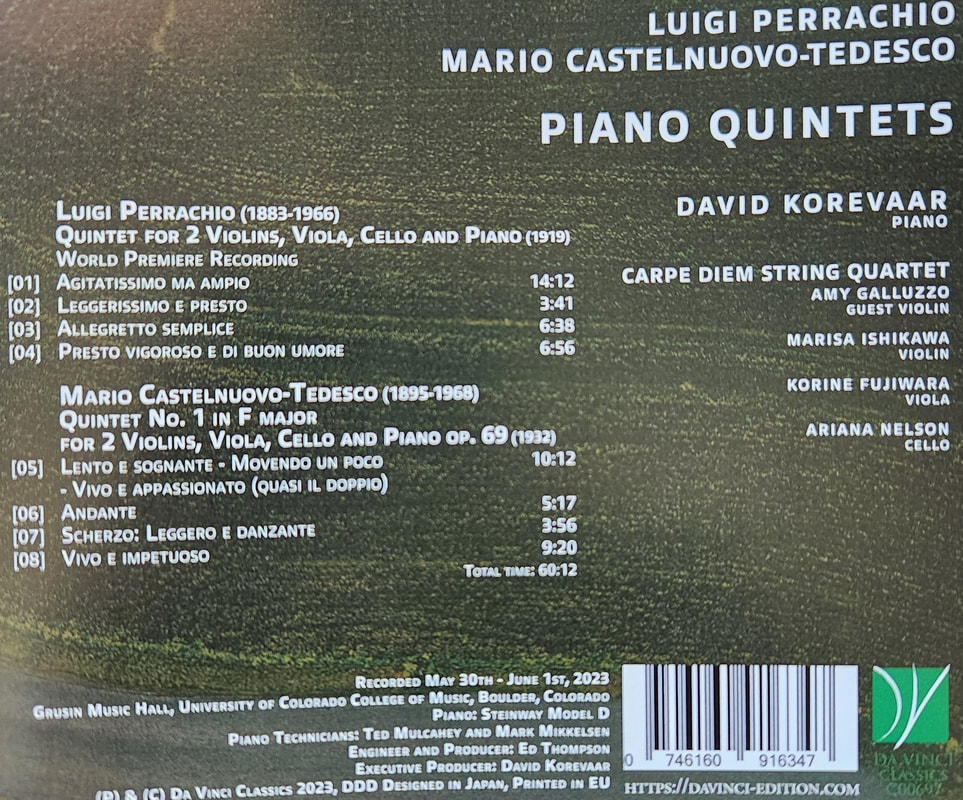
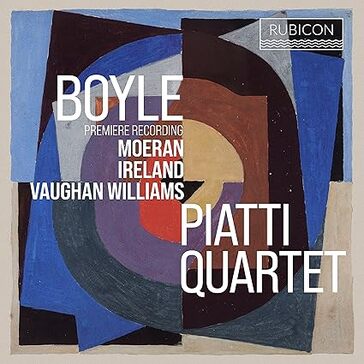
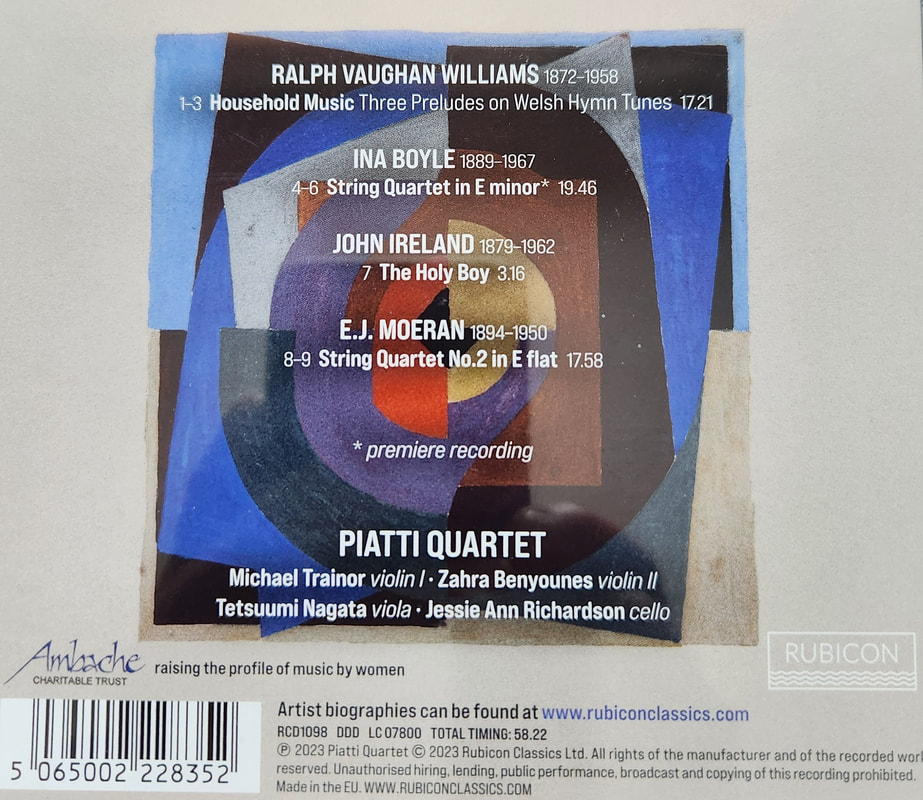
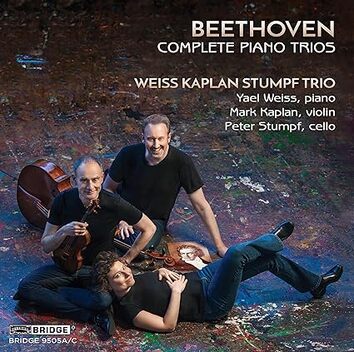
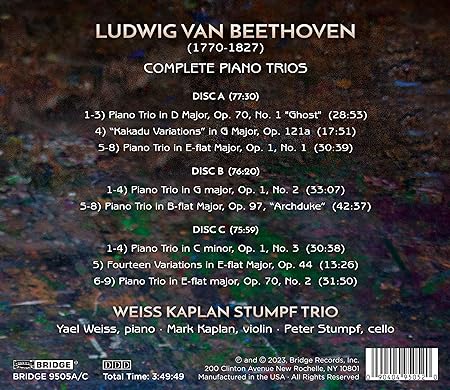
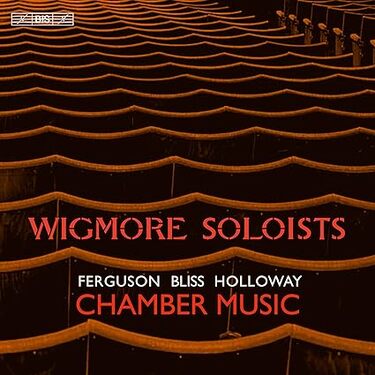
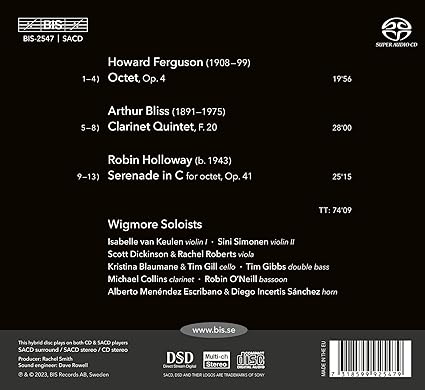
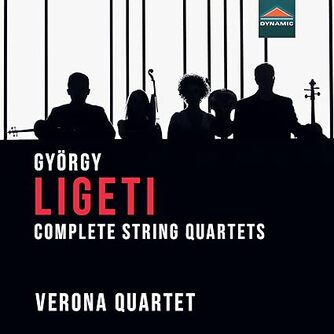
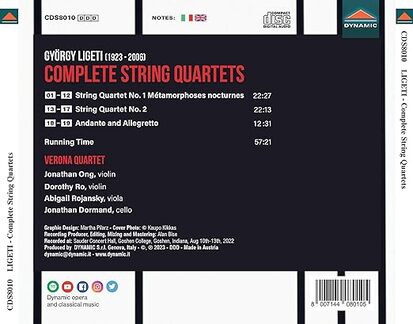
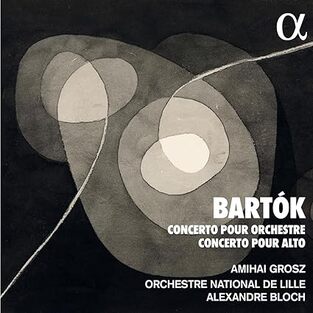
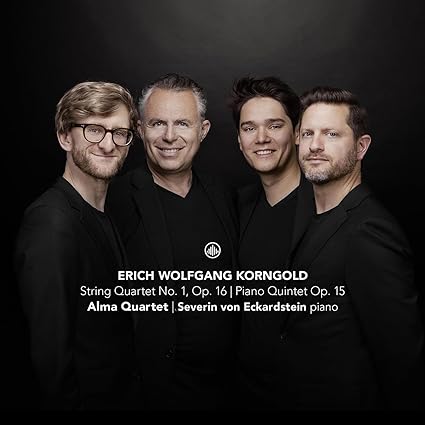
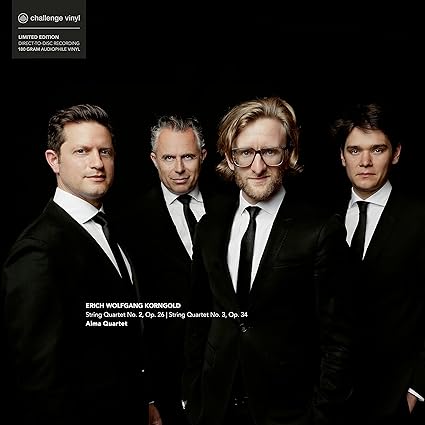
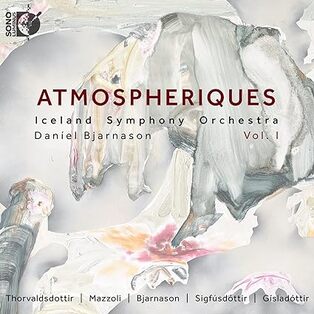
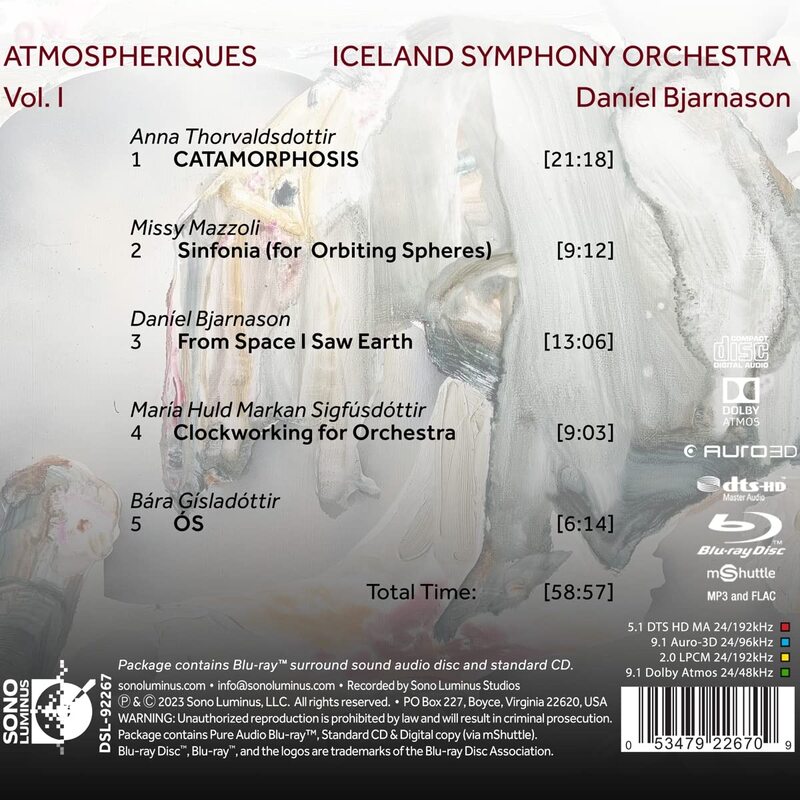
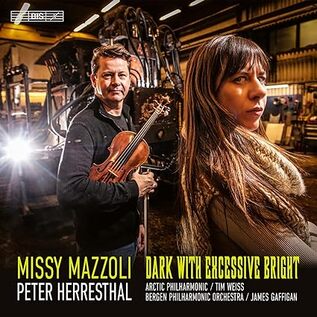
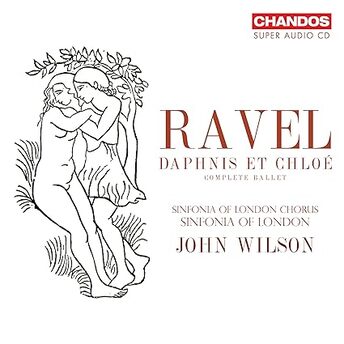
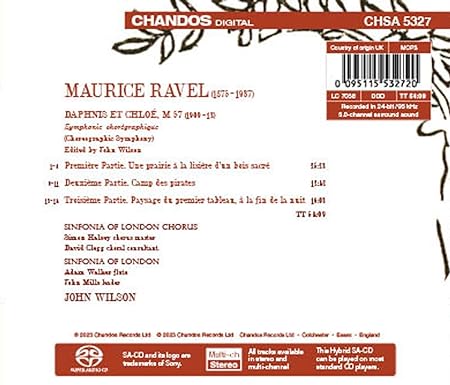
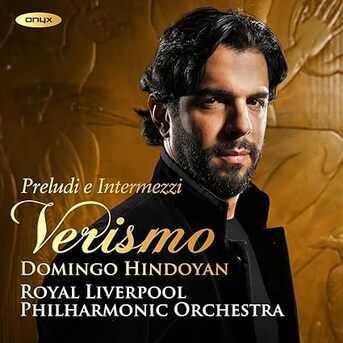
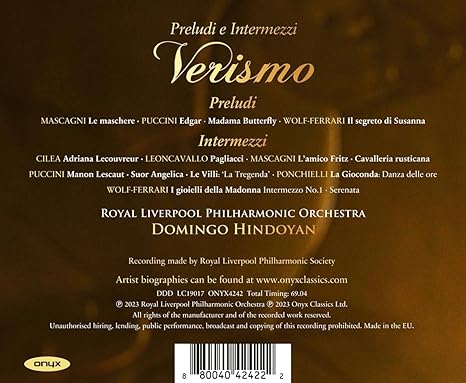
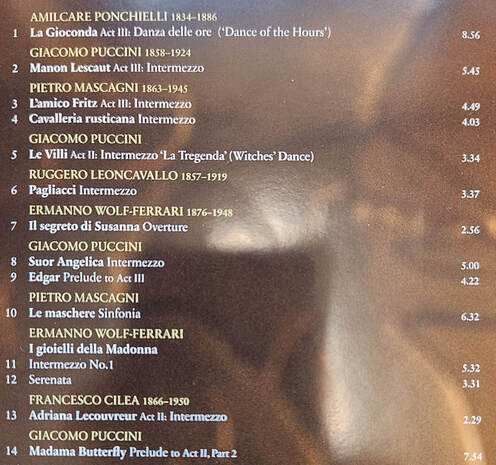
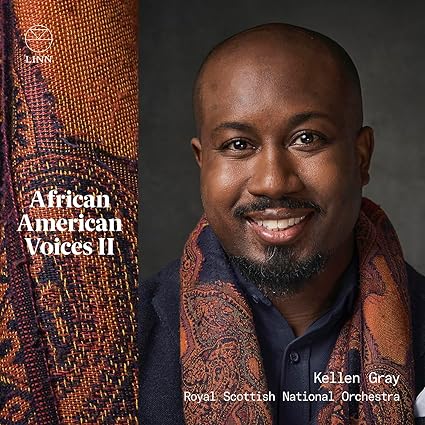
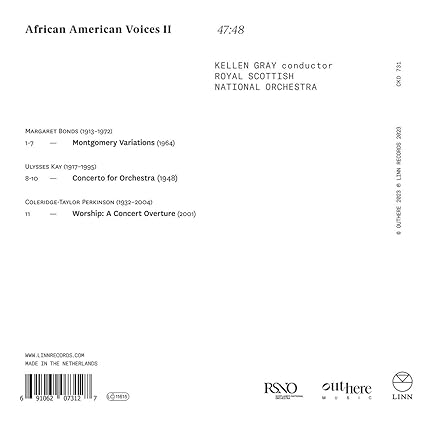
 RSS Feed
RSS Feed